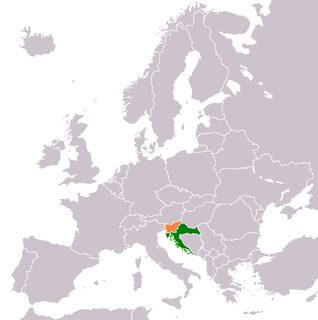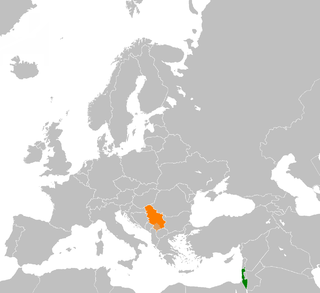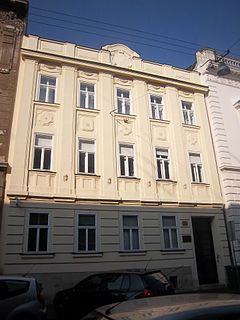
The Republic of Croatia is a sovereign country at the crossroads of Central Europe, Southeast Europe, and the Mediterranean that declared its independence from Yugoslavia on 25 June 1991. Croatia is a member of the European Union (EU), United Nations (UN), the Council of Europe, NATO, the World Trade Organization (WTO), Union for the Mediterranean and a number of other international organizations. Croatia has established diplomatic relations with 181 countries. The president and the Government, through the Ministry of Foreign and European Affairs, co-operate in the formulation and implementation of foreign policy.

Since Slovenia declared independence in 1991, its Governments have underscored their commitment in improving cooperation with neighbouring countries and to actively contribute to international efforts aimed at bringing stability to Southeast Europe. Resource limitations have nevertheless been a problem hindering the efficiency of the Slovenian diplomacy. In the 1990s, foreign relations, especially with Italy, Austria and Croatia, triggered internal political controversies. In the last eight years, however, a wide consensus has been reached among the vast majority of Slovenian political parties to jointly work in the improvement of the country's diplomatic infrastructure and to avoid politicizing the foreign relations by turning them into an issue of internal political debates.

In a referendum on 21 May 2006, the people of Montenegro opted to leave the State Union of Serbia and Montenegro. This result was confirmed with a declaration of independence by the Montenegrin parliament on 3 June 2006. It simultaneously requested international recognition and outlined foreign policy goals.

Widespread protests and riots in Serbia and North Kosovo followed the proclamation of independence by the Republic of Kosovo on February 17, 2008. Protests were also held by Serbs in Bosnia and Herzegovina and Montenegro.

Croatia–Slovenia relations are foreign relations between Croatia and Slovenia. Croatia has an embassy in Ljubljana and two honorary consulates in Maribor and Koper. Slovenia has an embassy in Zagreb and an honorary consulate in Split. The countries share 670 km (420 mi) of common border. Relations between Slovenia and Croatia are generally considered to be friendly, but plagued with a series of unresolved border disputes and other vestiges from the time when both countries were the northernmost part of SFR Yugoslavia.

Croatia–Kosovo relations refer to the bilateral relations of Croatia and Kosovo. Diplomatic relations among two countries were established on June 30, 2008, following Kosovo's declaration of independence. Croatia has an embassy in Prishtina, and Kosovo has an embassy in Zagreb. Both countries were part of Yugoslavia from 1918 to 1991. Relations between the two countries are described as very good and friendly.

The diplomatic relations between Israel and Serbia were established on January 31, 1992, when Serbia was part of FR Yugoslavia. Israel has an embassy in Belgrade and Serbia had an embassy in Tel Aviv. Yugoslavia was the second country in Europe to recognize Israel in 1948. The two countries have economic and cultural ties, helped by a sizable community of Jews from the former Yugoslavia in Israel. Serbia agreed to move its embassy to Jerusalem on 4 September 2020 but decided not to after Israeli recognition of Kosovo as a sovereign state.

Iran–Serbia relations are diplomatic relations between the Islamic Republic of Iran and the Republic of Serbia. Iran has an embassy in Belgrade and Serbia has an embassy in Tehran. In 2017, the government of Serbia announced that in order to improve bilateral relations as well as to attract tourists and investors to Serbia, it has passed a legislation to abolish visa requirements for citizens of Iran and India intending to travel to the country. Both Iran and Serbia are considered allies of Russia and China.
The Passport of Kosovo is a travel document that is issued to the citizens of Kosovo. The document facilitates international travel as well as serving as proof of citizenship. The issuance of passports is the prerogative of the Ministry of Internal Affairs, with the exception of diplomatic passports which are issued by the Ministry of Foreign Affairs. Kosovan passports comply with all the recommended standards set for machine-readable passports by the International Civil Aviation Organization (ICAO), but the country/citizenship code RKS is not within ISO 3166 and thus not ICAO-endorsed. The passport design was disclosed on 14 March 2008.

The Kantakuzina Katarina Branković Serbian Orthodox Secondary School, abbreviated as SPOG, is a coeducational gymnasium of the Metropolitanate of Zagreb and Ljubljana located in Zagreb, Croatia. It is the only non-seminary high school of the Serbian Orthodox Church in the former Yugoslavia.

Metropolitanate of Zagreb and Ljubljana is an Eastern Orthodox eparchy (diocese) and one of the five honorary Metropolitanates of the Serbian Orthodox Church. The headquarters of the Metropolia is located in Zagreb, Croatia and its jurisdiction covers northern Croatia and the entire territory of Slovenia.

The Serbs of Zagreb are a traditional minority group that lives in the Croatian capital Zagreb.
The Varaždin Apostol is a hand-written Orthodox liturgical book written in 1454. It is named after the northern Croatian city of Varaždin. The book represents the oldest preserved text in Cyrillic from the territory of today's Croatia. It contains the Acts of the Apostles and the New Testament epistles, and is kept today in the Museum of Serbian Orthodox Church in Belgrade, Serbia. The Varaždin Apostol was made by three transcribers of Countess Kantakuzina Katarina Branković, daughter of the Serbian despot Đurađ Branković and his wife Irene Kantakouzene, and the wife of Ulrich II, Count of Celje. The text is written in Resava orthography with elements of Raška orthography and the Mount Athos redaction, too. The language is the Serbian dialect of Old Church Slavonic. On the occasion of the 550th anniversary of the Apostol, the Serbian Orthodox Church issued a limited edition of 300 copies. As a gift from the Metropolitanate of Zagreb and Ljubljana, copies went to, among others, Serbian Patriarch Pavle, Croatian president Stjepan Mesić, the Lepavina Monastery, and the Celje city archive.

Museum of Serbs of Croatia was a public museum in Zagreb, which was specialized in history of Serbs of Croatia. Museum existed from 1946 till 1963 when it became part of Croatian History Museum. Today, part of the material is kept in Museum of Metropolitanate of Zagreb and Ljubljana, part in Prosvjeta, some in Museum of Croatian History and part of them were destroyed in mining of Museum of Metropolitanate of Zagreb and Ljubljana on 11 April 1992 during War in Croatia. In 2009, on 65 anniversary of Prosvjeta, organization has launched an initiative for restoration of museum work.

Porfirije is the current and 46th patriarch of the Serbian Orthodox Church. He was the metropolitan bishop of Zagreb and Ljubljana, from 2014 to 2021. Before that, he was titular bishop of Jegra between 1999 and 2014. He is also a university professor and author of theological works.














